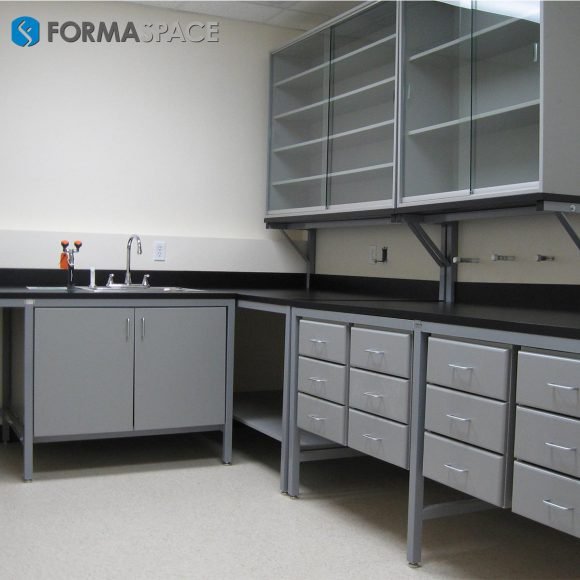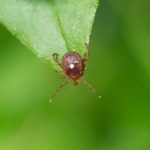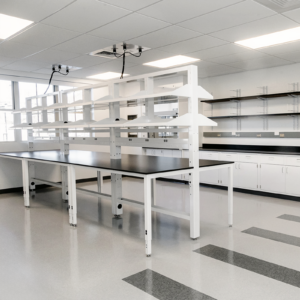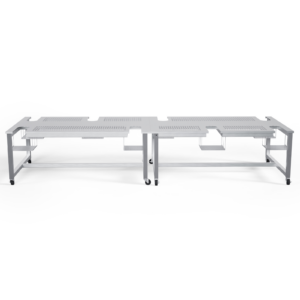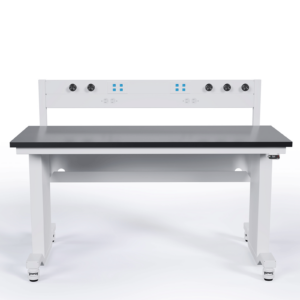Coronavirus will be with us for a significant period of time. We take a look at efforts to understand the mechanism of the new virus outbreak and what measures are underway to develop an effective vaccine.

With the number of reported cases (and deaths) mounting, the potential for a significant economic impact is rising as companies and public health officials take precautions to prevent the spread of the disease.
Mapping the Genes of Virus Responsible for the COVID-19 Outbreak
The first clear breakthrough came in early February 2020, when a team of scientists from more than half a dozen laboratories and institutes across China published the complete genetic map of the virus.
It revealed the new outbreak is caused by an exceptionally close variant of the SARS-CoV coronavirus responsible for the 2002-2003 SARS epidemic.
The new, closely related virus has been named SARS-CoV-2 (short for Severe acute respiratory syndrome coronavirus 2).
To avoid confusion with the earlier SARS outbreak, public health officials have officially designated the new outbreak as COVID-19 . This has become shorthand for both the outbreak and the virus itself, though the scientific name remains SARS-CoV-2.
Zoonotic Origin of COVID-19
By making the COVID-19 gene map publicly available, the Chinese research team provided the necessary genetic data for labs around the world to research the virus in detail.
One of the first discoveries was published by researchers at Baylor College of Medicine and The University of Texas MD Anderson Cancer Center in Houston.
Using sophisticated comparative data analysis methods, researchers found the COVID-19 virus more closely correlates with viruses found in Pangolins (scaly anteaters) – indicating a different zoonotic origin than the 2002-2003 SARS epidemic (which is believed to have been transferred to humans by civets.)
| Outbreak | MERS | SARS | COVID-19 | 1918 Spanish Flu |
| Morbidity and Epidemic “Hot Spots” | ~ 1,360 cases primarily in Middle East (Saudi Arabia) and South Korea | ~ 8,422 cases primarily in Asia (China, Hong Kong, Taiwan), Canada (Toronto) | ~ 90,000+ world-wide cases to date and rising rapidly. First wave in China, followed by Iran, Italy.
Most industrial countries now reporting a limited number of cases and deaths. |
World-wide (less in China)
Second year wave more virulent, with unusually high death rate among otherwise healthy people aged 15-34. 28% of US population affected. |
| Mechanism of contagion spreading | Close human contact.
Possible close contact with camels or use of camel-derived products |
Human to human contact. | Human to human contact.
Concern that asymptomatic carriers may shed virus at same high rate as symptomatic patients. |
Human to human contact. |
| Mortality | 527 deaths | ~ 800 deaths | ~ 3,000+ deaths | ~ 20-50 million deaths worldwide, including 675,000 in US |
| Mortality Rate (estimate) | ~39% | ~ 9 – 11% but approaching 50% for ages 60+ | ~ 3% but localized rates of up to 15%
(estimate) |
~ 2 – 3% (estimate) |
COVID-19 PCR (Polymerase Chain Reaction) Test
The availability of the COVID-19 genetic maps has also enabled laboratories around the world to create new PCR-based (polymerase chain reaction) test virus kits.
Numerous news outlets report that the CDC’s initial PCR test has been in very short supply, and there are concerns it may be less accurate than PCR tests available in other countries. This is a worrying situation, as it leaves open the possibility that the COVID-19 outbreak may have spread further and faster across the US than is presently understood.

Efforts to Develop an Effective COVID-19 Vaccine
Lab researchers have used multiple research techniques to identify the likely primary human receptor of the new COVID-19 outbreak.
Chinese researchers studying the virus directly report that it appears to be the same human receptor implicated in the SARS epidemic: angiotensin-converting enzyme 2 (ACE2). Two American research teams have confirmed this, one using a protein modeling method and another using a reverse genetics approach.

Meanwhile, researchers at NIAID and the University of Texas published highly detailed cryogenic electron microscope representations of the virus, which provide additional biophysical and structural evidence that the new COVID-19 (SARS-CoV-2) virus has a higher affinity for binding with ACE2 receptions than the earlier SARS virus.
Determining exactly where a virus attacks the human cell is one of the critical building blocks necessary to create an effective treatment or vaccine.
Organizations Working to Develop a COVID-19 Vaccine
Many health organizations and laboratories with active MERS or SARS research projects are quickly redirecting their efforts toward creating a workable COVID-19 vaccine.

Some of the most notable projects include:
Organizations:
Wistar Institute (David Weiner) and Inovio
Project Description:
Evaluate a DNA-Based MERS Vaccine currently undergoing clinical trials for efficacy against COVID-19.
Collaborators:
Université Laval, the National Institutes of Health’s Rocky Mountain Laboratories
Funding:
$56 million from CEPI (Coalition for Epidemic Preparedness Innovation)
Organizations:
National Institute of Allergy and Infectious Diseases (NIAID) and Moderna, a biotech company based in Cambridge, MA
Project Description:
A Messenger RNA (mRNA) based vaccine
Funding:
CEPI (Coalition for Epidemic Preparedness Innovation)
Organization:
University of Queensland
Project Description:
A COVID-19 vaccine created from synthetic viral proteins stabilized with a novel molecular clamp that is designed to keep the proteins in place, making them easier for them to be recognized by the immune system
Funding:
Up to $10.6 million from CEPI (Coalition for Epidemic Preparedness Innovation)
Organization:
Sanofi Pasteur
Project Description:
Develop a recombinant protein–based COVID-19 vaccine based technology used in Flublok, an influenza vaccine manufactured by Sanofi.
Collaborators:
BARDA (the Biomedical Advanced Research and Development Authority, part of DHHS)
Funding:
Details unknown
Organization:
Janssen Research & Development, part of Johnson & Johnson
Project Description:
Collaborators:
BARDA (the Biomedical Advanced Research and Development Authority, part of DHHS)
Funding:
Details unknown
Organization:
CureVac, a German pharmaceutical company that also develops mRNA-based vaccines.
Project Description:
CureVac will expand on previous mRNA vaccine studies that showed promise in inducing antibodies against the MERS virus. The new CEPI funding extends an ongoing $34-million award to develop an mRNA based printer capable of producing thousands of does of mRNA vaccines inside lipid nanoparticles.
Collaborators:
Unknown
Funding:
Up to $8.3 million from CEPI (Coalition for Epidemic Preparedness Innovation)
Organization:
Gilead Sciences
Project Description:
There are reports Gilead began enrolling patients February 6, 2020, in a human trial to determine if its antiviral drug Remdesivir will be effective against the COVID-19 virus. Previous animal studies of Remdesivir showed promise in treating MERS-CoV systems as well as possibly preventing MERS-CoV infections.
Collaborators:
China-Japan Friendship Hospital in Beijing
Funding:
Unknown
Organization:
NIAID (National Institute of Allergy and Infectious Diseases, part of NIH)
Project Description:
In addition, NIAID and NIAID-supported scientists are exploring whether vaccines developed for SARS and MERS are effective against COVID-19. These projects include
- Investigation of broad-spectrum antiviral compounds, including Kaletra (also known as lopinavir and ritonavir) and interferon-beta.
- NIAID partnership with Oxford University to develop of a chimpanzee adenovirus-vectored vaccine candidate.
- Investigating use of neutralizing monoclonal antibodies—developed from a recovered MERS patient and immunized rhesus macaques—to target the virus’ S protein.
- Evaluation of an earlier clinical trial of SAB-301, which triggers human antibodies to the MERS virus, as well as a Phase I trial of two monoclonal antibodies, REGN3048 and REGN 3051.
Collaborators:
Oxford University UK and others
Funding:
NIH
Organization:
Rega Institute for Medical Research, Belgium
Project Description:
The Bill & Melinda Gates Foundation shipped > 15,000 antiviral candidates from The Scripps Research Institute to the Riga Institute to undergo high-speed evaluation to identify compounds showing promise against the COVID-19 virus.
Collaborators:
The Scripps Research Institute, San Diego
Funding:
The Bill & Melinda Gates Foundation

Trust Formaspace for Your Laboratory Needs
Formaspace can assist with all aspects of your laboratory projects, whether you are expanding, upgrading, or optimizing your facilities.
Our list of laboratory customers includes some of the best-known names in the industry: Abbot Laboratories, Amgen, Baxter, Bayer, GlaxoSmithKline, Johnson & Johnson, Merck & Co., Novartis, Pfizer, Roche, Avero, and Quest Diagnostics Inc.
Take the next step. Contact your Formaspace Design Consultant today.


